Grotte de Niaux
times
10H30
11H30
12H15 Tours in English
13H15
14H15
15H00
15H45
16H45
17H30
Information
The visit
A mysterious voyage to the heart of a prehistoric sanctuary awaits you!
Booking is essential!
Kitted out with a portable lamp, you go along the main gallery for 800 metres before you reach the “Salon Noir” (Black Chamber). Just before you reach this chamber, you can see the “panneau de signes” (panel of signs), on which there are a large number of geometric signs whose meaning remains a mystery.
The Salon Noir, a vast rotunda, contains more than 80% of the cave’s animal figures, all of remarkable quality and great precision: bison, horses, ibex and stag.
In 1906, two of that time’s most famous prehistory specialists – Emile Cartailhac and the Abbé Breuil – began to study the caves and discovered most of the drawings.
But, given the sheer size of the cave, some of the works escaped their notice.
The major discovery remains the Réseau Clastres (Clastres Network), a gallery more than one kilometre long and only accessible to divers. More than 500 human footprints have been found in this network, along with five depictions of animals: three bison, a horse and a weasel, the only known representation of this animal in prehistoric cave paintings.
Floor engraving is an extremely rare technique, specific to the Pyrenees. Niaux is the cave that has the most examples of this (the most famous of which are the two salmon and the "bison aux cupules" drawn around natural holes).
It is not permitted to come too close to these particularly fragile engravings.
So, reproductions are on display in the Prehistory Park where they can be admired by everyone. This is also the case for the paintings and footprints from the Dune of Footsteps in the Réseau Clastres.
To find out more
Since 1963, and the closing of Lascaux Cave to the public, the climatological studies of caves have shown that in order to preserve prehistoric paintings there are certain limits that must not be crossed. Studies of the cave’s climate began in 1972 and made it possible to establish a protocol for visits in the 1980s. Groups are therefore limited to 25 people and must respect a certain time interval between each visit. No destabilisation of the climate in the cave has been observed since these rules came into force. This initiative means that future generations will be able to see the drawings, and will guard against any need to close the site.
discover









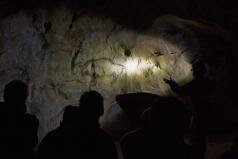
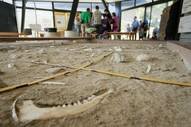


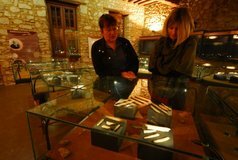
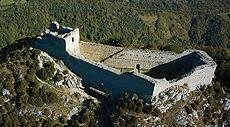



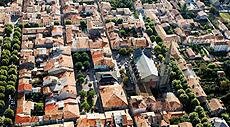

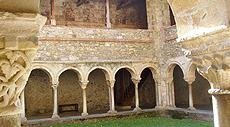

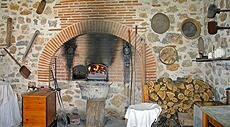












Bisons, horses,
ibex and stags...